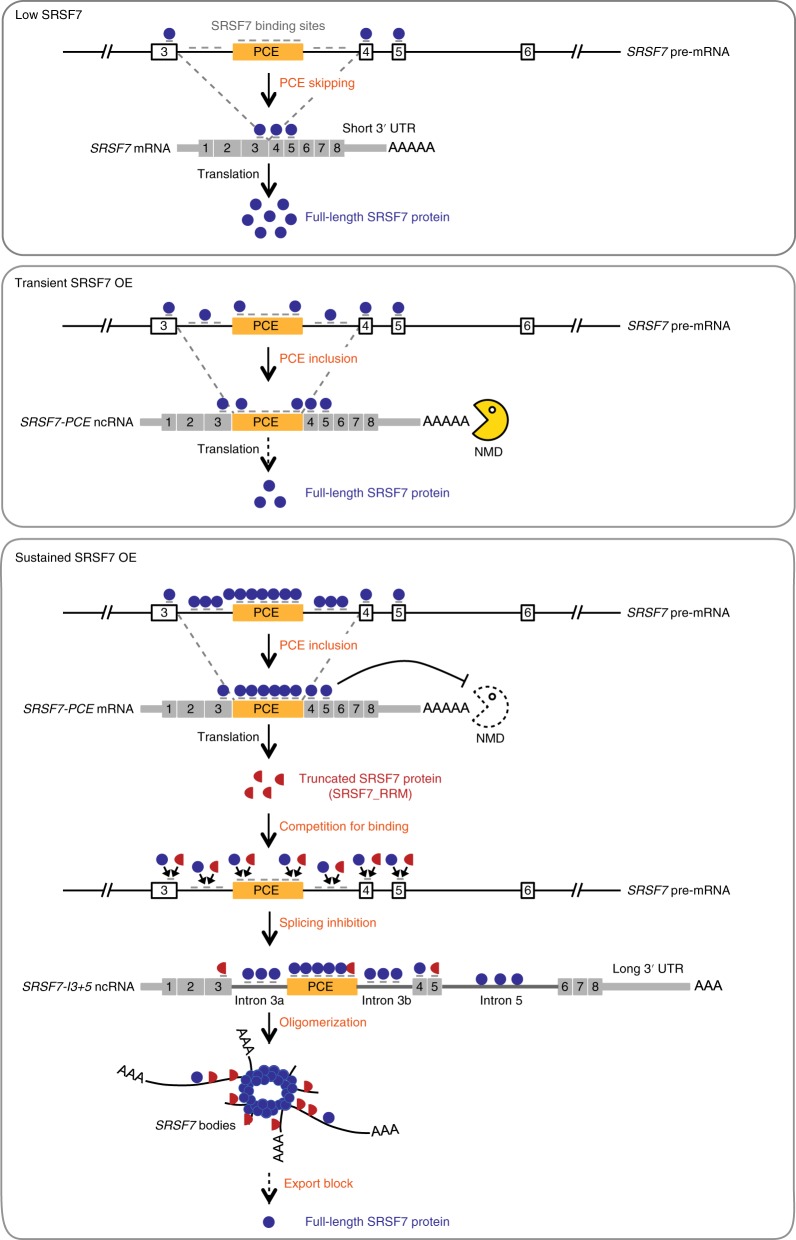Fig. 8. Model of SRSF7 auto-regulation.
Top: at low levels, SRSF7 promotes PCE skipping, producing a functional SRSF7 protein. Middle: upon transient OE, SRSF7 binds to splice sites within the PCE and promotes its inclusion. SRSF7-PCE transcripts are rapidly degraded by NMD in the cytoplasm, and the levels of functional SRSF7 protein decreases. Bottom: sustained SRSF7 OE protects bicistronic SRSF7-PCE transcripts from NMD and translation produces two SRSF7 protein halves (SRSF7_RRM and SRSF7_RS). SRSF7_RRM acts as a dominant-negative form and outcompetes full-length SRSF7, inhibiting PCE inclusion and promoting retention of introns 3a, 3b and 5 instead. Intron-containing SRSF7-I3+5 transcripts now act as arcRNAs, which assemble nuclear bodies at SRSF7 transcription sites via massive binding of SRSF7 and its oligomerization. SRSF7 bodies sequester intron-retained and likely fully spliced SRSF7 mRNAs, resulting in the reduction of functional SRSF7 protein in the nucleus and translatable SRSF7 transcripts in the cytoplasm, ultimately restoring normal SRSF7 levels.

